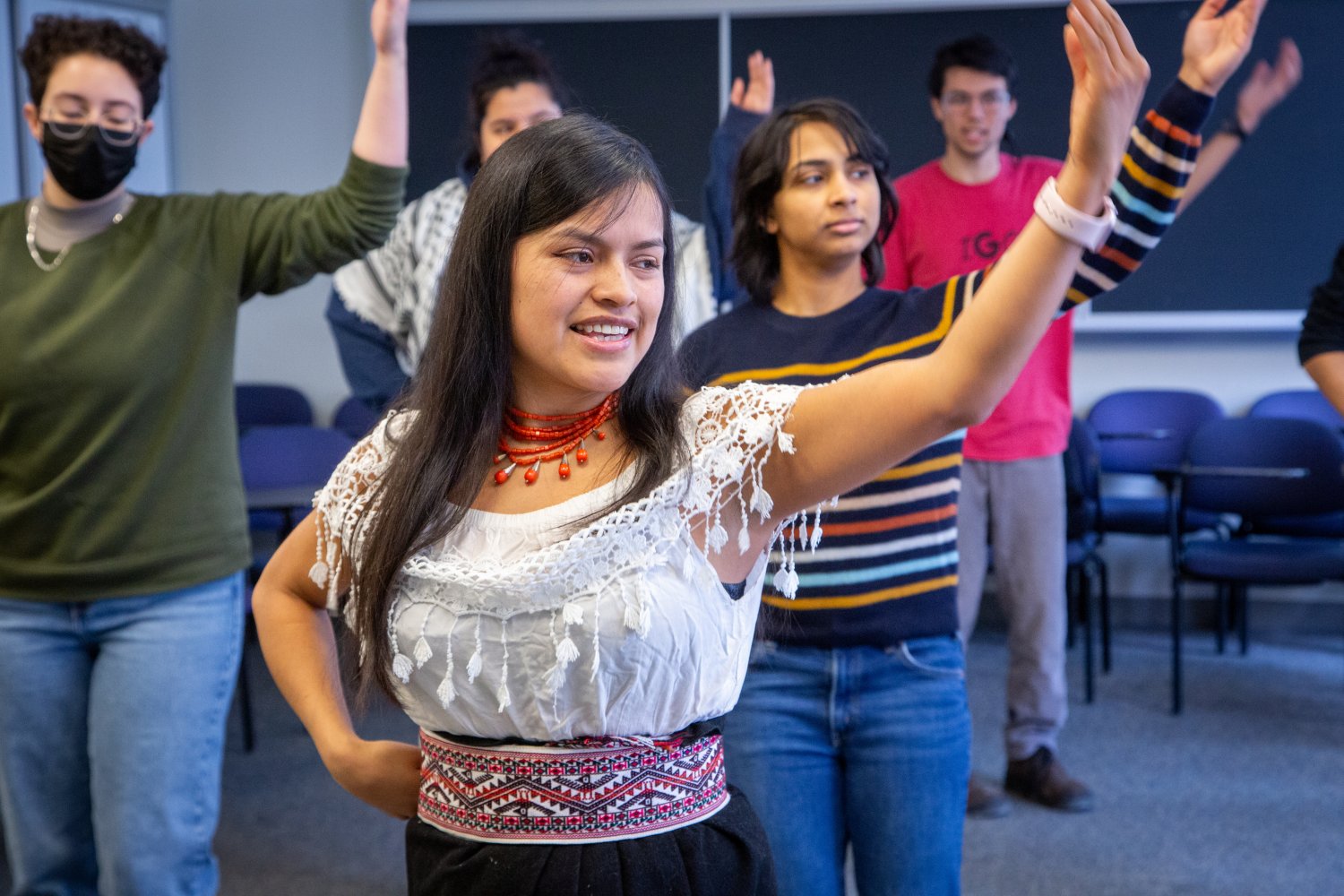
Soledad Chango, a native of Ecuador and a graduate student in MIT’s Indigenous Language Initiative, began preparations for her Quechua course with a clear idea about its purpose.
“Our language matters,” she says. “It’s worth studying and spreading.”
Quechua at MIT, a new two-week introductory class hosted by MIT Global Languages during the Institute’s Independent Activities Period in January, introduced students to the basics of Kichwa, a Quechua variant that is the most widely spoken language in the Americas. The class, which featured an interactive approach, focused on oral and written skills, emphasizing tasks based on familiar contexts. “I prepared conversations that reflect cultural values,” Chango emphasizes.
Chango, a scholar of language acquisition, credited her advisor, MIT Linguistics professor Norvin Richards, and postdoc Cora Lesure with helping shape the course. Global Languages section head Per Urlaub helped ready the course for the classroom. “They helped me refine my ideas about what to teach and how to teach it,” she says.
Cultural immersion, value, and language acquisition
Because language can often be better understood when connected with its cultural context, Chango introduced students to the history, culture, and geography of the Andes mountains where the language’s speakers live, work, and play. Cultural discussions and interactions with artifacts were designed to help students understand the value of the endangered language.
“Every day, we dedicated time to individually review our writing and grammar skills,” says Isabel Naty Sanchez Taipe, a computer science and education student at Wellesley College and a cross-registered student and student researcher at MIT. “We practiced the pronunciation of new vocabulary and sentences out loud, and engaged in diverse group activities and games where we spoke Quechua as much as possible.”
Chango sought to emphasize the importance of keeping Kichwa and Quechua alive. When endangered languages disappear, so do the communities and culture from which they rose.
“In 2014, I was investigating Indigenous language advancement, tracking changes and usage,” she says. “Research shows the youngest Indigenous people retain and value their native languages the least.”
Multilingualism as a tool for improvement
Multilingualism can prove valuable both academically and professionally.
“I would definitely recommend that people explore languages taught in this manner,” says Prahlad Balaji Iyengar, a PhD student in electrical engineering and computer science who took the course. “I think this was a great opportunity for me to learn a new mode of thought.”
As Chango continues to review and refine the course, she looks to technology to both help retain Quechua’s distinctive traits and reverse its trajectory toward extinction. She wants to ensure languages like Kichwa find interested audiences outside of their native cultures.
“Technology can help spread the word and increase interest in Indigenous languages like Quechua,” she says. “I want to expand its reach from oral tradition and transmission and develop it so it supports quantifiable and replicable language instruction.”
